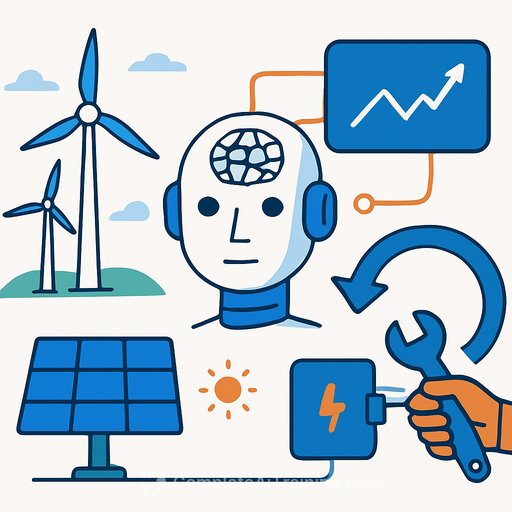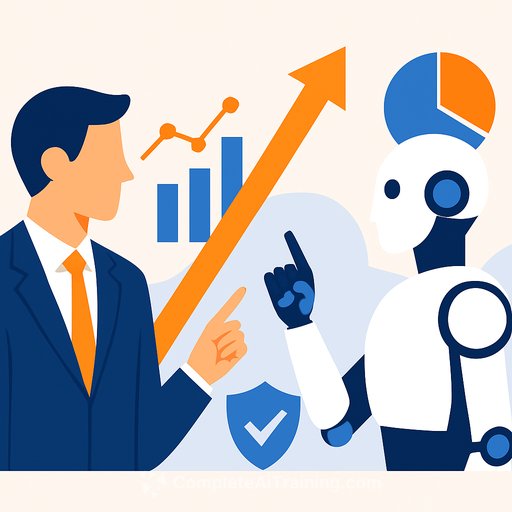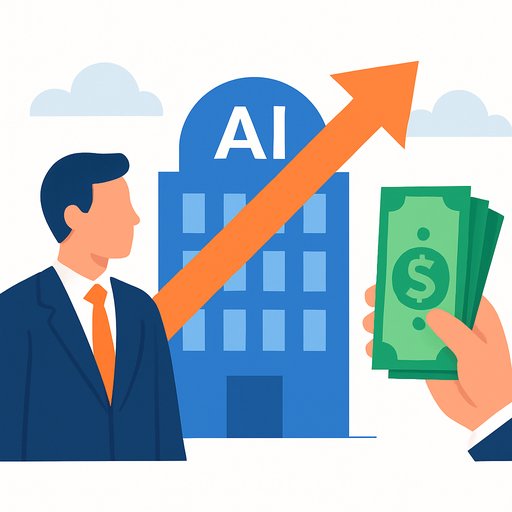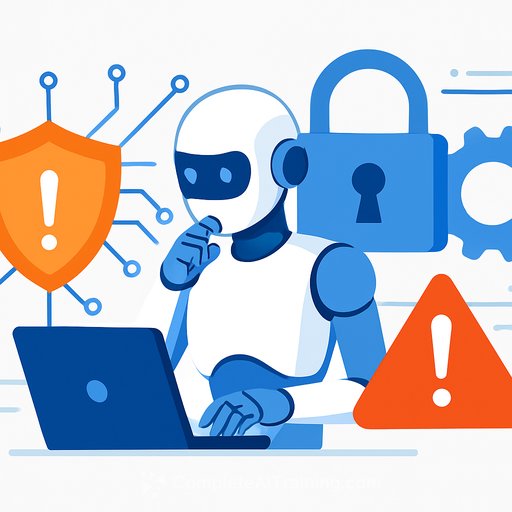Improve Energy Performance: Practical AI Moves For Renewable Energy And Efficiency
Leaders don't need another trend. You need lower costs, cleaner portfolios, and fewer surprises on the grid. AI helps on all three by turning messy energy data into decisions that raise availability and cut waste.
Below is a clear view of where AI fits, what to measure, and how to deploy without slowing operations.
Forecast production better, commit smarter
Solar and wind are variable. AI closes the gap between what the weather promises and what your assets deliver. With better forecasts, you can plan dispatch, schedule maintenance, and set PPA commitments with confidence.
- Integrate weather, SCADA, market, and curtailment data into one pipeline.
- Use day-ahead and intra-day forecasting to reduce imbalance penalties and curtailment.
- Align forecasts with trading and scheduling to improve bid accuracy.
Example: Google's DeepMind has used AI to predict wind output with higher accuracy, improving operational efficiency and financial planning. See their note on making wind more predictable: DeepMind wind forecasting.
Orchestrate distributed energy resources (DER)
Rooftop solar, community batteries, small wind, EV fleets-great in isolation, tricky in aggregate. AI acts as a conductor, balancing supply and demand in near real time and limiting overloads.
- Deploy an AI-based energy management system for feeder-level visibility.
- Set rules for peak shaving, export limits, and voltage control.
- Automate demand response with price and constraint signals.
Example: Grid Edge uses AI to manage distributed renewables in the UK, improving utilization and reducing reliance on fossil peakers.
Cut industrial energy use without slowing throughput
Plants run on thin margins. AI spots patterns that humans miss-inefficient setpoints, idle loads, and off-spec runs that burn kWhs for no value.
- Stream sensor and historian data into an analytics layer; tag assets consistently.
- Benchmark lines, shifts, and recipes; flag abnormal consumption automatically.
- Push setpoint recommendations back to PLC/BMS with operator approval.
Example: Uptake Technologies analyzes multi-sensor data to improve energy efficiency and equipment performance across industrial sites.
Move from reactive to predictive maintenance
Every unplanned outage hurts output and contract performance. AI uses vibration, temperature, and inverter logs to predict failures before they cascade.
- Prioritize critical assets (turbines, inverters, trackers, transformers).
- Build failure signatures from historical events and near-misses.
- Trigger work orders automatically with severity-based SLAs.
Example: Siemens applies AI to turbine and PV data to predict issues early, keeping assets at optimal performance and lowering maintenance costs.
Make storage work harder
Storage earns its keep through timing. AI improves charge/discharge decisions based on forecasts, price signals, and grid constraints.
- Use stacked value streams: arbitrage, peak shaving, backup, and ancillary services.
- Blend production forecasts with market prices to plan cycles and extend battery life.
- Automate bids where regulations allow; enforce safety and warranty limits.
Example: Tesla's Powerwall uses AI to plan charging and discharging from solar, improving self-consumption and reducing waste.
What to measure (make the ROI visible)
- Forecast accuracy (MAE/MAPE) and imbalance cost reduction.
- Capacity factor uplift and curtailment reduction.
- O&M savings, avoided truck rolls, and availability improvement.
- kWh per unit output (industrial), and off-peak load shifted (MWh).
- Battery cycle efficiency, degradation rate, and revenue per cycle.
- LCOE impact and emissions avoided per MWh.
90-day implementation playbook
- Weeks 1-2: Pick one use case, one site, one KPI. Define the data contract (sources, cadence, quality).
- Weeks 3-6: Connect data (SCADA, EMS/BMS, weather, market). Build a baseline and a simple model. Stand up a read-only dashboard.
- Weeks 7-10: Run A/B or shadow mode. Validate results with operators. Document exceptions.
- Weeks 11-13: Move to human-in-the-loop control. Set alert thresholds and escalation paths. Lock in SOPs.
Integration checklist (don't slow operations)
- APIs into SCADA/EMS/BMS, CMMS, and trading platforms.
- Role-based access, audit logs, and change control.
- Edge deployment for low-latency control where needed.
- Fail-safe modes and easy rollback.
Risk controls and governance
- Data quality: automate anomaly detection and gap filling.
- Model drift: retrain on a schedule tied to seasonality and asset changes.
- Cybersecurity: network segmentation, MFA, least-privilege access.
- Vendor risk: portability clauses, data ownership, and open data formats.
- Compliance: align with grid codes, safety standards, and warranty terms.
Budgeting and procurement notes
- Start with OPEX-funded pilots; shift to multi-site rollout post-ROI proof.
- Ask vendors for quantifiable lifts and reference sites comparable to yours.
- Price in integration, training, and change management-these drive outcomes.
Further reading
Upskill your team
If you're building internal capability for AI in operations and energy management, explore role-based programs here: Complete AI Training - Courses by Job.
The takeaway: use AI where it directly improves forecasts, uptime, and timing. Start focused, measure clearly, and scale what pays back.
Your membership also unlocks:






